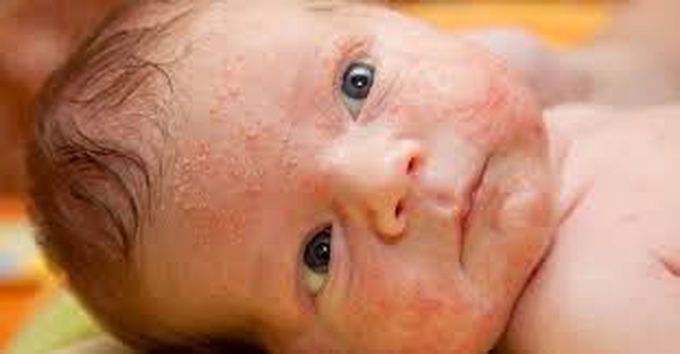


Symptoms of baby acne
BABY ACNE OVERVIEW An infant with baby acne and two magnified images of a papule and a pustule. Baby acne causes papules or pustules to form on your infant’s skin. What is baby acne? Baby acne is a common and short-term skin condition that causes acne breakouts to form on your baby’s face or chest. Similar to adult acne, symptoms of baby acne include pimples, little bumps or pustules on your baby’s skin. It usually only lasts a few days to a couple of weeks. Other names for baby acne are newborn acne, neonatal acne or neonatal cephalic pustulosis. Is baby acne the same as infantile acne? While both conditions have the same symptoms, the difference between baby acne and infantile acne is when it affects your child. Baby acne occurs on average around 2 weeks of age. Some babies are born with acne and it goes away within weeks. Infantile acne occurs between 2 months to 1 year. Symptoms of infantile acne can reach beyond pustules and bumps to include blackheads. If your child gets acne after 2 months of age, visit a healthcare provider. It may take longer for infantile acne to clear up. Cleveland Clinic is a non-profit academic medical center. Advertising on our site helps support our mission. We do not endorse non-Cleveland Clinic products or services. Policy Who does baby acne affect and how common is it? Baby acne can affect any newborn before they turn 2 months old. It’s common and affects nearly 20% or more than 1 in 5 healthy newborns in the United States. SYMPTOMS AND CAUSES What does baby acne look like? Baby acne can be present at birth or show up on your baby’s skin before they turn 2 months old. It can look similar to mild adolescent or adult acne. Features of baby acne include: Small, red to purple bumps that are swollen (papules). Bumps that contain pus, surrounded by a red to purple or dark brown ring (pustules). Your baby’s acne may look more visible when they cry. They also won’t have blackheads if they have baby acne.

